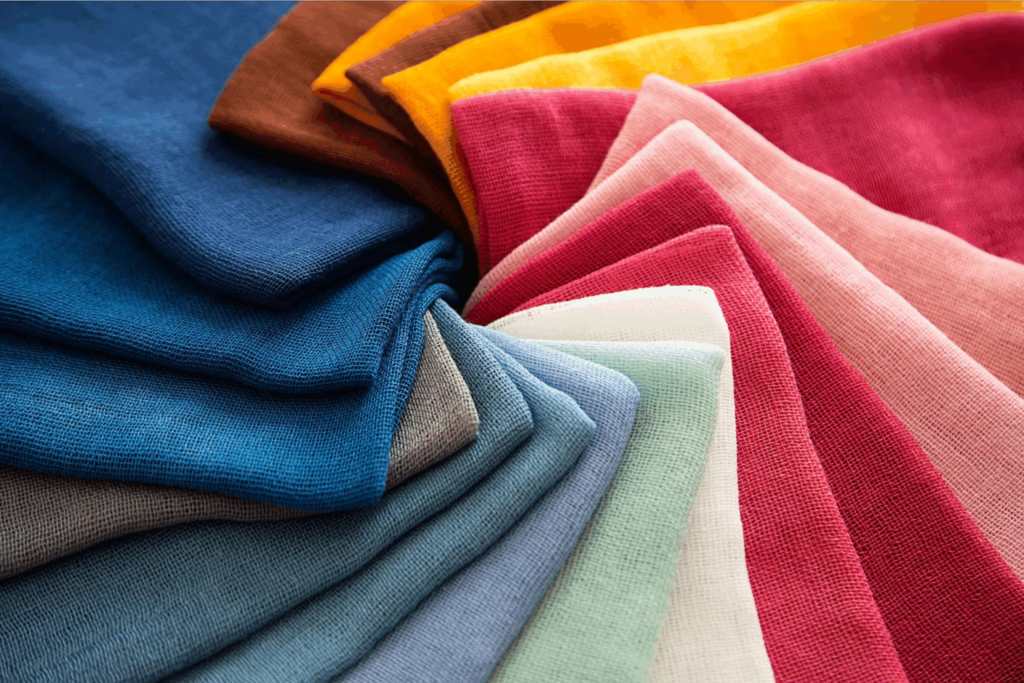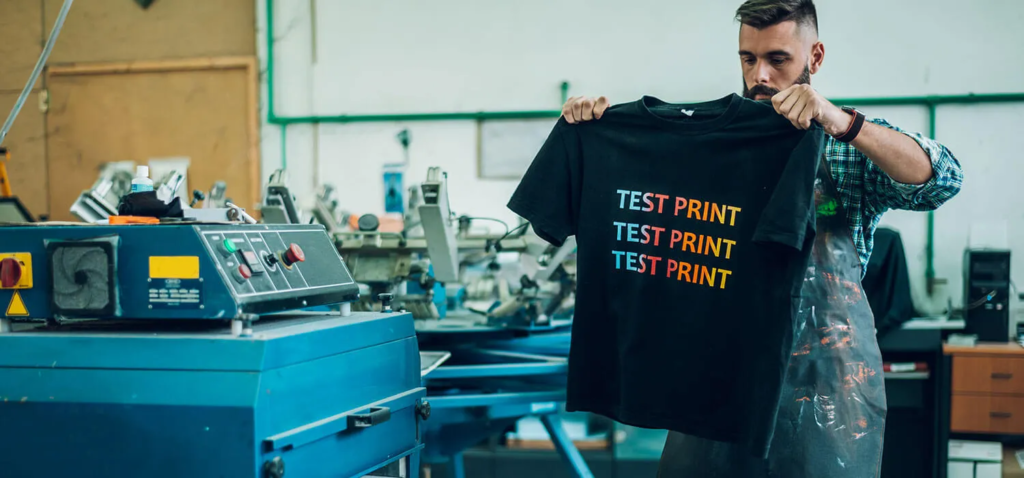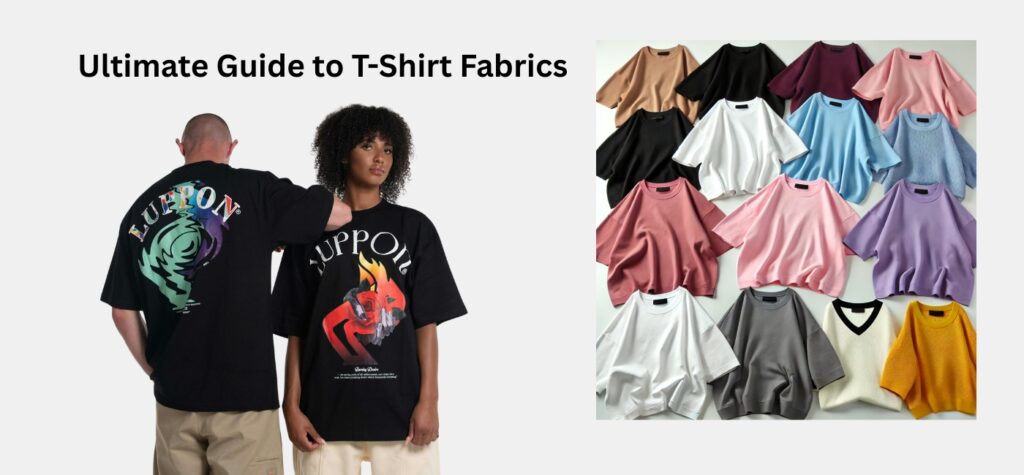Understanding T-shirt fabrics is critical for designers, manufacturers, and retailers who want to deliver high-quality products. The right fabric choice impacts comfort, durability, and customer satisfaction. This guide covers everything from fabric weight and yarn count to printing techniques and care instructions—ensuring you make informed decisions for your next T-shirt collection.

1. Fabric Weight (GSM): The Thickness Factor
Fabric weight, measured in grams per square meter (GSM), determines a T-shirt’s thickness and opacity.
160-180 GSM fabrics are lightweight and slightly sheer, best for relaxed fits or layered styling. The 180-220 GSM range offers the ideal balance for short sleeves with good opacity and breathability. For heavyweight options, 220-300 GSM fabrics work well for long sleeves or premium streetwear. A 220 GSM fabric provides the perfect compromise—thick enough to avoid transparency while remaining breathable for everyday wear.
2. Yarn Count (Ne): What Does It Mean?
Yarn count (Ne) indicates fiber fineness, with higher numbers representing finer, softer yarn.
Coarse yarn (≤18Ne) creates rugged, textured fabrics. Medium yarn (19-29Ne) serves as the standard for most T-shirts. Fine yarn (30-60Ne) delivers an ultra-soft, luxury feel common in high-end fashion. Most commercial T-shirts use 21-32Ne yarn—soft enough for comfort yet durable for mass production.
3. Mercerized Cotton: A Superior Finish
Mercerization chemically enhances cotton’s strength, luster, and dye absorption.
Single mercerized cotton treats yarn before weaving, improving durability. Double mercerized cotton undergoes a second treatment for extra smoothness and sheen. This process creates fabric that resists pilling, holds color better, and feels silkier than untreated cotton—key advantages for premium apparel.
4. High-End Fabrics: When Quality Matters
Double mercerized cotton offers superior smoothness and luster compared to single treatment. Ultra-fine high-thread-count cotton (120Ne-200Ne+) provides an exceptionally soft, nearly silky hand feel, though at premium prices reaching $3000/kg for 200Ne count—best reserved for luxury limited editions.
For blended options, 80% cotton/20% polyester blends resist wrinkles while remaining affordable, while 65% cotton/35% polyester increases durability at the cost of some breathability. Pure cotton works best for comfort-focused basics, while cotton/polyester blends suit performance wear and budget-friendly options.
5. T-Shirt Printing Methods Compared
Screen printing follows a multi-step process from design to curing, ideal for bold designs and large orders (50+ pieces) with excellent durability lasting 50+ washes. Heat transfer methods like DTG and sublimation accommodate photorealistic prints in small batches but may crack after 20+ washes.

Embroidery excels for logos and premium branding, though it adds stiffness that makes it unsuitable for large designs. For mass production, screen printing delivers the best value, while DTG handles small batches with intricate artwork, and embroidery elevates luxury branding.
6. Fabric Care: Keeping T-Shirts Like New
Printed T-shirts should be washed inside-out in cold water with prints avoided during ironing. Stretch fabrics containing spandex or elastane require special care—never use bleach and always air-dry to preserve elasticity. Delicate knits like mesh or lightweight cotton benefit from mesh laundry bags and flat drying to prevent stretching.
Common care mistakes include overloading washers (which causes friction damage) and using high-heat drying (which shrinks cotton). Proper fabric maintenance extends garment life significantly.
7. Industry Trends: What’s Next in T-Shirt Fabrics?
Sustainable recycled cotton blends are gaining popularity for their eco-friendly appeal. Emerging technologies like self-healing prints using microcapsule technology promise longer-lasting designs, while moisture-wicking finishes enhance performance for activewear.
A smart cost-saving strategy for mid-range collections involves using 32Ne single mercerized cotton, which delivers near-luxury quality without the premium price of double mercerized fabrics.
Conclusion: Choosing the Right Fabric for Your Brand
Selecting optimal T-shirt fabrics requires balancing brand priorities. Budget-conscious lines should consider 180-220 GSM, 21-32Ne cotton. Premium collections benefit from double mercerized 40-60Ne fabrics, while performance wear works best with cotton/polyester blends.
For businesses seeking expert fabric sourcing guidance, professional consultation can help navigate these complex decisions to achieve the perfect balance of quality, cost, and performance characteristics. This comprehensive knowledge ensures informed fabric selections that meet both production requirements and consumer expectations.

